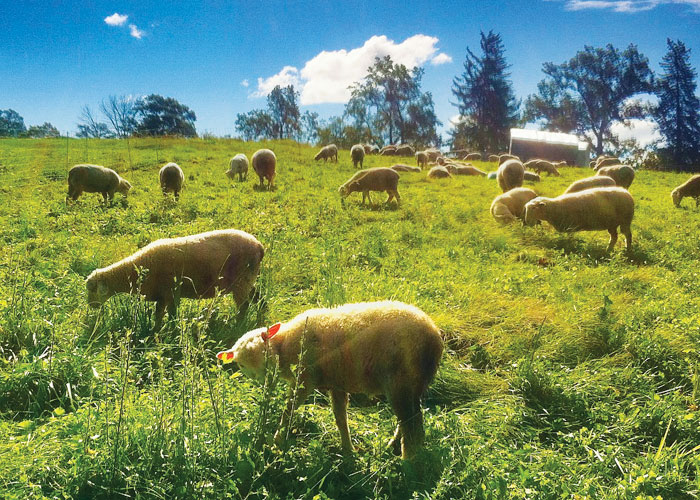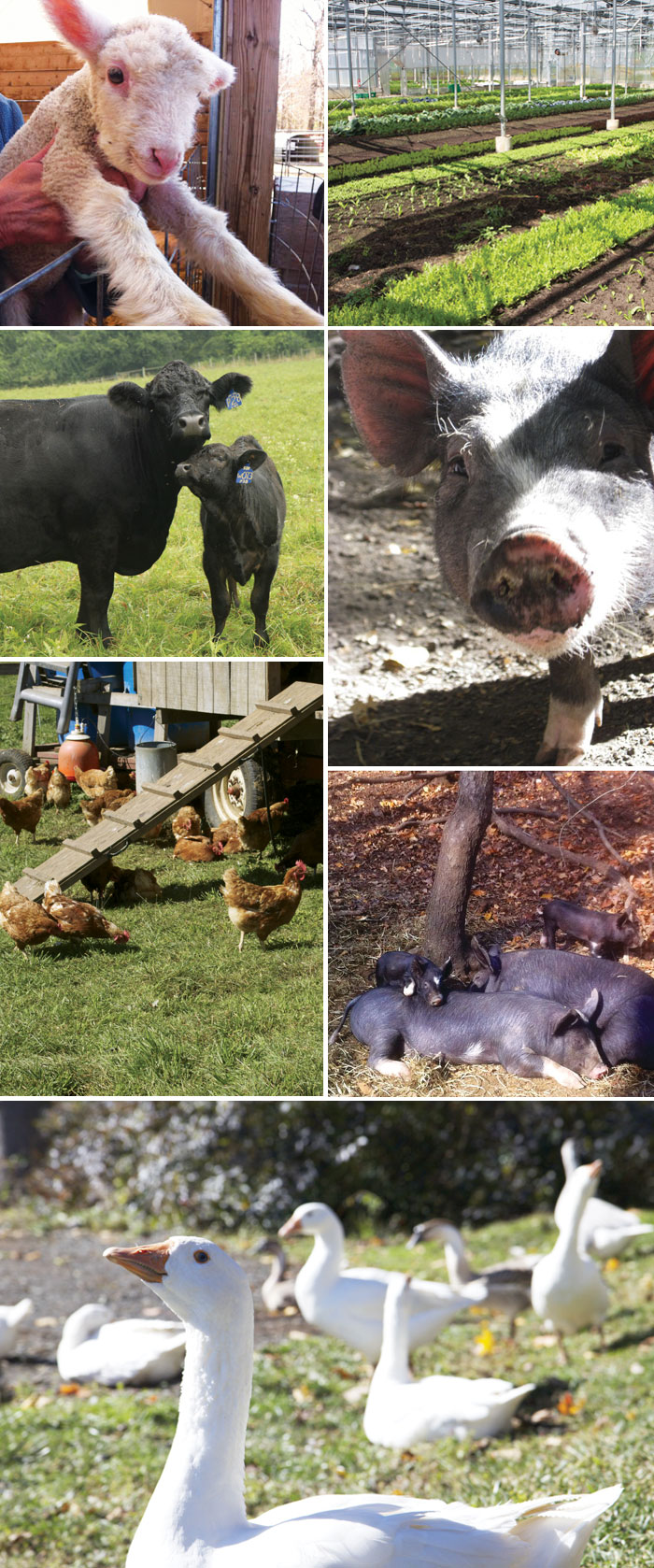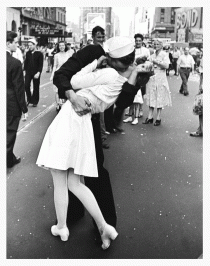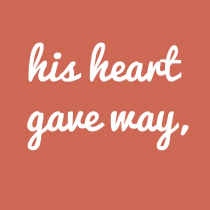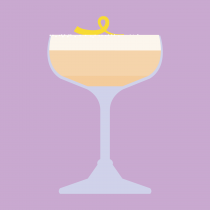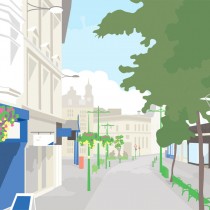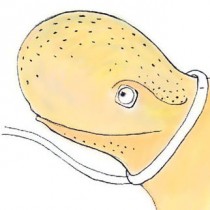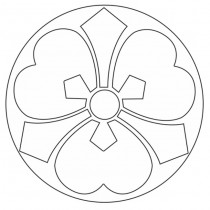Blue Hill at Stone Barns
|
Anyone who has known me in the past nine years, knows how completely in love I am with Blue Hill at Stone Barns. Zach and I discovered Blue Hill in 2004, whilst looking for a restaurant to host our small wedding reception in NYC. After reading an intriguing review of the Washington Square Park location (which occupies an old underground “speakeasy”), we booked an appointment to view it. The maître d’ took one look at our outdoorsy-flip-flopped-Californian attire and suggested we may be better suited to Blue Hill’s ‘other’ restaurant. Thank you, insightful maître d’, whoever you were—you were right on the money! The ‘other’ restaurant is about 30 miles outside the city, and is set within Pocantico Hills’ Stone Barns Center for Food and Agriculture. Similarly elegant to the Washington Square Park location, this site has the added benefit of being situated within a beautiful working farm and educational center, and is steps away from the wonderful hiking trails and lakes of Rockefeller State Park Preserve. The restaurant sources ingredients from their surrounding farmland, growing the herbs and vegetables right on site, and rears pigs, geese, lambs, cows and chickens just a hop, skip and a jump away from their kitchens. They even harvest their own honey from prettily painted hives! As their website states, “There are no menus at Blue Hill at Stone Barns. Instead, guests are presented with a list of over a hundred ingredients, updated daily, which contains the best offerings from the field and market.” This is culinary perfection for picky eaters, such as myself. After celebrating our 20-person wedding there in the November, so began our beautiful and fulfilling relationship with Blue Hill at Stone Barns. We now visit on a weekly, sometimes daily basis. We visit in the bleak mid-winter and tramp around in the knee-deep snow looking for tiny piglets. We visit in lambing season and marvel at the curly cuties. We visit in the steamy summer, quenching our thirst with drinks and baked treats from the cafe. We visited one Christmas day and built snow animals on the trail. We even (on special occasions) dine in the phenomenal restaurant—the deep-fried, panko-crusted soft-boiled eggs are insanely good. Well, it is all insanely good, and is crafted with intelligence, elegance and care. Am I gushing enough yet? Aside from the stunning-and-good-for-the-soul surroundings and the undeniably creative and scrumptious food, it is the philosophy of Blue Hill that I am most smitten with. The farm is tended by enlightened farmers who work the land with understanding and care for the environment, and the animals are kept happy and healthy, with ample room to flap, to run, and to sunbathe in muddy puddles. The Center takes education seriously, encouraging members of the public to join in gathering eggs, to taste from the farmers market and the cafe, and get their hands dirty planting vegetables. They even offer a farm camp that invites school-age children to participate in hands-on, culinary and creative activities that connect them to food, farming and nature. They strive to improve public awareness of healthy, seasonal and sustainable food. And it is all wrapped up and tied with a bow by the sophisticated and charming graphic design skills of Blue Hill Owner, Laureen Barber. It is … just brilliant! See if you agree: In this TED talk, below, Blue Hill Co-Owner and Chef, Dan Barber, suggests that the current agrobusiness model to “feed more people, more cheaply” is old fashioned, and unsustainable. He gives the example of large fish (such as tuna, salmon and halibut) whose numbers have dramatically collapsed to less than 10%, due to over-fishing. Subsequently, fish farming—raising fish commercially in tanks or enclosures—is now a necessary part of our future. The problem with fish farms is that they not only pollute waters, but they are inefficient: 15 lbs of feed produces only 1 lb of farmed fish—hardly a sustainable model. And where is all that feed coming from? If you watch the talk, you may be disgusted and surprised by the answer! As an alternative, Chef Dan promotes the importance of an ecological farming model, one that concentrates on replenishing what it depletes. He presents the example of spanish aquafarm, Veta la Palama, that has created an artificial wetland by restoring 8,000 acres of damaged marshlands to provide a habitat to a significant population of fish and crustaceans. The farm has become a self-restoring ecosystem to such a degree that the farmers do not need to feed their fish. Amazingly, the farm also doubles as a bird sanctuary, attracting more than 200 species of birds! Give this video a watch, you’ll laugh and cry, I promise: In this next talk, Chef Dan discusses ‘humane foie gras’. This sounds cronkers (crazy-bonkers), I know. Foie gras is a food product made from the liver of a duck or goose. Traditionally, birds are force-fed ridiculous amounts of corn using a funnel fitted with a long tube, which forces the feed into their esophagus. (I might puke just thinking about it.) The effect of this forced-feeding is a soft and fatty, yellow-looking liver, which people find delectable. Here Chef Dan explains how he discovered a kinder, better, simpler, more ecological way to produce the best foie gras in the world: You are our hero, Blue Hill, and we take you for better or for worse, for richer, for poorer, in sickness and in health, to love and to cherish; from this day forward until death do us part. Sources: Stone Barns Center for Food and Agriculture |
